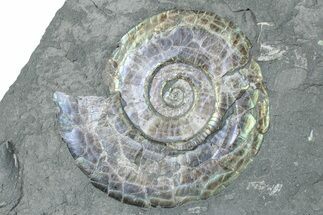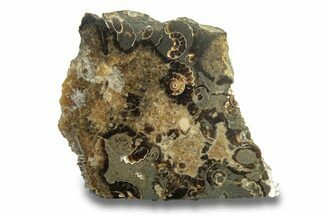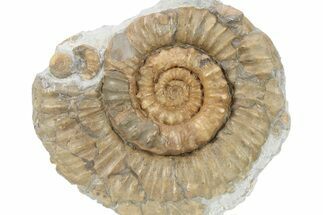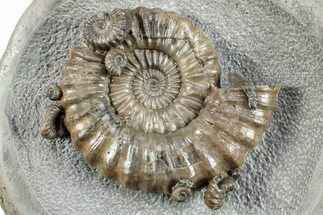This Specimen has been sold.
Two Iridescent Ammonites (Psiloceras) - England
This plate contains three brilliantly iridescent ammonites (Psiloceras planorbis, largest 2.2" wide) from England. Their naturally iridescent shells display some beautiful blues, greens, and fiery oranges. Like most fossils from the Blue Lias Formation, these ammonites have been compressed and flattened by the same geological processes of heating and pressure, forming this iridescence. This beautiful piece comes with an acrylic display stand.
Ammonites were predatory cephalopod mollusks that resembled squids with spiral shells. They are more closely related to living octopuses, though their shells resemble that of nautilus species. True ammonites appeared in the fossil record about 240 million years ago during the Triassic Period. The last lineages disappeared 65 million years ago at the end of the Cretaceous.
SPECIES
Psiloceras planorbis
LOCATION
Noth Somerset, England
FORMATION
Blue Lias Formation
SIZE
Largest: 2.2" wide, Rock: 12.05 x 4.5"
CATEGORY
SUB CATEGORY
ITEM
#280329
We guarantee the authenticity of all of our
specimens. Read more about our
Authenticity Guarantee.
specimens. Read more about our
Authenticity Guarantee.
 Reviews
Reviews












